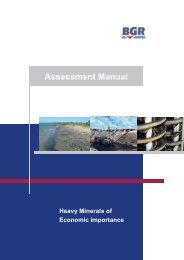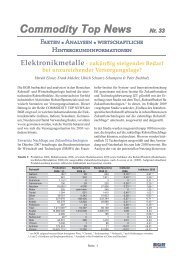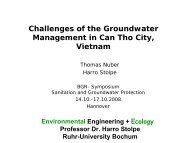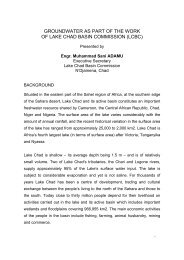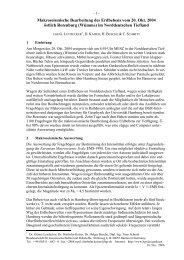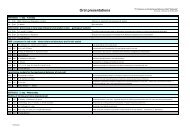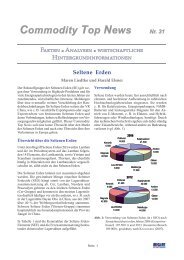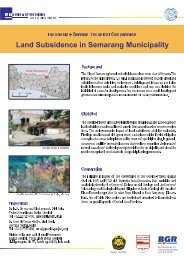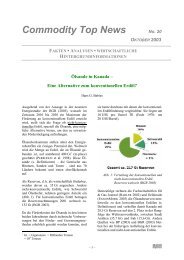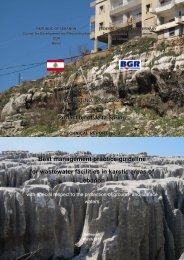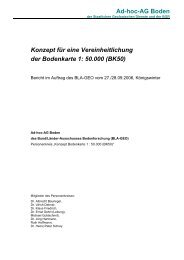THE SMOOTH SOUNDING GRAPH. A Manual for Field Work ... - BGR
THE SMOOTH SOUNDING GRAPH. A Manual for Field Work ... - BGR
THE SMOOTH SOUNDING GRAPH. A Manual for Field Work ... - BGR
You also want an ePaper? Increase the reach of your titles
YUMPU automatically turns print PDFs into web optimized ePapers that Google loves.
10<br />
1.3. The four-electrode arrangement<br />
In order to be independent of the contact resistance at the current elec-<br />
trodes A and B, WENNER (1917, USA) and C. & M. SCHLUMBERGER<br />
(1920, France) proposed the so-called four-point-method, placing A and B<br />
symmetrically to a centre point and in addition in between also sym-<br />
metrically to this centre two so-called potential electrodes M and N. From<br />
Fig.6 we see the current flowing from A to B through the earth. The cur-<br />
rent intensity I can be read from an ampere-meter. Along each current<br />
line in the underground the voltage from the power supply, say e.g. 200 V<br />
is decreasing from 200 V at A to zero at B. If we mark on all current lines<br />
points of equal voltage (e.g. <strong>for</strong> 180, 160, ..., 40, 20 V) and combine<br />
these points we get the so-called equipotential lines running perpendicular<br />
to the current lines and ending with a right angle at the earth's surface.<br />
At the surface there exists a potential distribution during the current flow-<br />
ing from A to B. This distribution, obviously depending on the resistivity ρ<br />
of the underground, can be observed by measuring the voltage U be-<br />
tween the equipotential lines at the surface. Using the four point ar-<br />
rangement this will be done between M and N using a volt-meter. Now<br />
how to calculate the earth's resistivity from current intensity I and volt-<br />
age U? This can be done easily from equation (5) looking at Fig.3 and<br />
Fig.7.<br />
If the distance AB between the current electrodes is L and the distance<br />
MN between the potential electrodes is a, then the distance from A to M is<br />
AM =<br />
L a<br />
−<br />
2 2<br />
and the distance from A to N<br />
L a<br />
AN = −<br />
2 2<br />
In equation (5) developed from Ohm's Law,<br />
R<br />
1,<br />
2<br />
=<br />
ρ ⎛ 1 1 ⎞<br />
2 ⎜ −<br />
r1<br />
r ⎟<br />
π ⎝ 2 ⎠<br />
⎛ L a ⎞<br />
we simply have to replace r1 by ⎜ − ⎟<br />
⎝ 2 2 ⎠<br />
⎛ L<br />
a ⎞<br />
and r2 by ⎜ + ⎟<br />
⎝ 2 2 ⎠<br />
=<br />
U1<br />
I<br />
, 2



